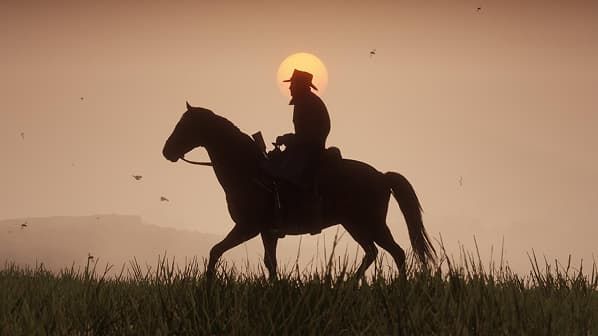Red Dead Redemption 2 (RDR2), an open-world epic with a story told in the later years of the Wild West, offers players both a simulation richness of living during 1899 and narrative richness. Whether you’re an experienced gamer or newcomer, starting such a massive open-world game may be daunting. To clarify concepts and minimize frustration, this guide is based on features, systems, and game mechanics.
A Brief Guide to Construction Jobs

1. The Historical and Technological Setting
Set in 1899, the game depicts a changing world. The spread of the railroad slices through wilderness, the steam engine transforms transport, and innovations such as revolvers and early electricity indicate a progressing society. Players will traverse cities, towns, rolling hills, snowy mountains, and bayous filled with swampy water. Highlighting the scope is the world’s realism: a verdant landscape teeming with wildlife, random combat encounters, and dynamic weather systems that change the world’s perception and even its navigation.
Another significant feature is speed. Unlike in today’s automobiles in games like GTA V, RDR2 is historically accurate. You’ll be on horseback or on a train, prioritizing immersion over convenience. To maximize travel time, invest in early camp upgrades like the fast travel system, accessed through Arthur Morgan’s tent.
2. Improved Open World Design and NPC Interactions
The open world comes alive due to Rockstar’s revolutionary interaction mechanics. NPCs (non-player characters) have over 500,000 lines of dialogue; Arthur may speak with nearly everyone, including shopkeepers and other travelers. This interaction affects both gameplay and the unique Honor System. Threatening or killing NPCs, for example, will increase bounties on your head, while helping strangers gains good will and over time improves society’s perception of Arthur. Players thus build their West, as a good bounty hunter or a violent outlaw.
In addition, random events and dialogue choices do not alter the overall story but can influence honor points, in-game discounts in stores, and NPC reactions. Such a subtle balance enables freedom and form, keeping interactions meaningful but not overbearing.
3. Immersive Simulation Mechanics
RDR2 defies categorization as a simple action-adventure game by featuring robust simulation mechanics:
1) Survival Mechanics: Arthur’s stamina, health, and Dead Eye must be controlled. While hunting and cooking enhance his stats, keep in mind that sleeping tends to fill up all cores so eating is second in non-hunting activities.
2) Horse Bonding: Your horse isn’t just along to take you places—it’s incorporated into the game. Bonding with your horse increases its stamina, temperament, and skills such as drifting in combat. Keep the expensive Horse Reviver with you in the event your horse is killed, as losing it will remove bonding progress on a new horse.
3) Environmental Details: Leaving out minor details like Arthur’s journal or random encounters diminishes the experience. His sketchbook and note-taking provide more character depth, and unseen interactions might be connected to larger tales or reap thematic rewards.
4. Strategic Resource Management and Hidden Mechanics
Efficient resource management in the game helps to prevent possible burnout in this epic game:
1) Camp Donations: Instead of spending initial profits on cosmetic upgrades or guns (as excellent guns are most readily obtained via story quests), prioritize camp upgrades. Improving the camp unlocks such as enhanced medical supplies, ammunition, and more functional conveniences in terms of fast travel.
2) Stores and Collectibles: Stores seem inevitable, but much of what you need you can scavenge from the enemies, especially ammo. Also, frantically looking for completionist collectibles (like cigarette cards) will exhaust you. First, get the important missions and events done.
5. Maneuvering a Comprehensive, Realistic Combat System
Combat in RDR2 has a distinctive rhythm that is different from standard action games. The measured pace is consistent with its period setting, and iconic elements such as Dead Eye (temporarily being able to slow time, enabling accurate aiming) develop over the course of the narrative. Players might feel they are underpowered at first but will need to stay with it. In Chapter 2, gun customizations and side pursuits such as bounty hunting build up skills organically.
In addition, the game promotes practice and prudence. Rushing through enemy-stricken regions at high speeds usually leads to collisions with hostile rocks or wild animals. Get into the habit of slow riding and frequent scanning of your environment in order to stay away from extraneous accidents.


Guess you like
-

Step-by-Step Manual to Uninstall Software and Maintain Optimal Functionality of Your Mac
-

Surprising But Effective Tricks to Clean Oil Stains for Good
-

Nintendo Switch 2 vs Switch 1: A Leap Forward in Handheld Gaming
-

Know the Vital Differences Between GPT-3.5 and GPT-4
-

6 Effective Tips to Put Your Tangled Wires in Order
-

Best HR and Payroll Software for Businesses in 2025
Trending
-
 1
1A Smarter Way to Surf the Web with ChatGPT Atlas
-
 2
25 Apps Using Apple Intelligence to Transform Your Daily Life
-
 3
3Five AirPods Features That Make Everyday Listening Smarter and More Seamless
-
 4
4Battlefield 6 Beginner Tips for Winning Fights and Surviving Each Mode
-
 5
5Your Chatbot AIs Could Soon Determine What You View on Facebook and Instagram
-
 6
6How Seam Sealer Quietly Keeps Your Car Alive


